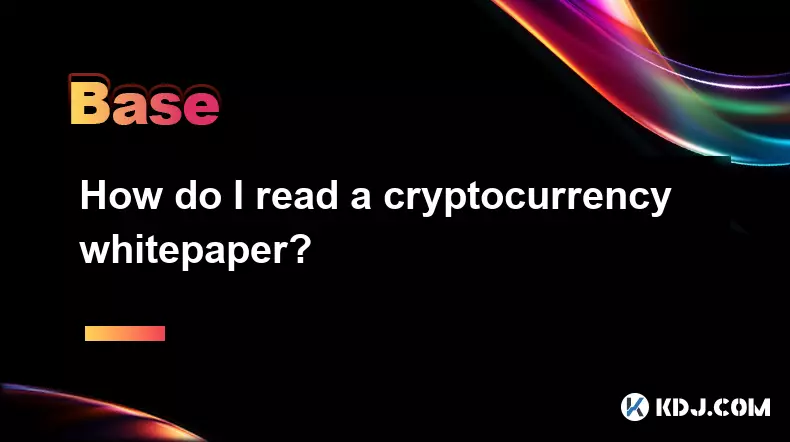-
 bitcoin
bitcoin $114779.865156 USD
2.30% -
 ethereum
ethereum $4226.519789 USD
2.39% -
 tether
tether $1.000545 USD
0.04% -
 xrp
xrp $2.890223 USD
0.92% -
 bnb
bnb $1030.029301 USD
2.95% -
 solana
solana $212.824944 USD
1.69% -
 usd-coin
usd-coin $0.999757 USD
0.01% -
 dogecoin
dogecoin $0.234961 USD
-0.27% -
 tron
tron $0.337174 USD
0.42% -
 cardano
cardano $0.804783 USD
0.09% -
 hyperliquid
hyperliquid $45.748770 USD
-2.85% -
 chainlink
chainlink $21.699170 USD
0.82% -
 ethena-usde
ethena-usde $1.001452 USD
0.08% -
 avalanche
avalanche $30.237800 USD
1.14% -
 stellar
stellar $0.372604 USD
1.52%
What Is an Algorithmic Stablecoin?
Algorithmic stablecoins, lacking real-world collateral, utilize a dynamic supply-demand mechanism to maintain a target price through minting or burning tokens, offering decentralization and inflation resistance but also posing risks of volatility and algorithmic failures.
Oct 16, 2024 at 03:13 pm

An algorithmic stablecoin is a type of cryptocurrency whose value is pegged to a target currency, such as the US dollar, through an algorithmic mechanism that adjusts the supply and demand of the stablecoin. Unlike fiat-backed stablecoins, algorithmic stablecoins do not hold any real-world assets as collateral.
2. MechanismAlgorithmic stablecoins maintain their peg through a combination of two processes:
Expansionary: When the stablecoin price falls below the target, the algorithm mints new tokens, increasing the supply. This drives up the demand and price of the stablecoin.
Contractionary: Conversely, when the stablecoin price rises above the target, the algorithm burns tokens, decreasing the supply and reducing the price.
Algorithmic stablecoins use various mechanisms to ensure price stability, including:
Seigniorage: Profits from the expansionary and contractionary processes are used to incentivize holders and stabilize the price.
Oracle: The algorithm relies on oracles to provide accurate data on the target currency's price.
Feedback Loop: The expansionary and contractionary processes create a negative feedback loop that helps the stablecoin converge to the target price.
Some notable algorithmic stablecoins include:
TerraUSD (UST)
Dai (DAI)
Basis Cash (BAC)
Fei Protocol (FEI)
Decentralization: Algorithmic stablecoins are not backed by a centralized entity, making them more resistant to censorship.
Inflation Resistance: The contractionary mechanism can help mitigate inflation by reducing the supply of the stablecoin.
Programmatic Transactions: Algorithmic stablecoins can facilitate programmable transactions, such as automatic payments or decentralized exchanges.
Volatility: Algorithmic stablecoins can experience significant price fluctuations while maintaining their peg.
Algorithmic Failures: The complex algorithms used in algorithmic stablecoins can introduce potential vulnerabilities.
Dependence on Oracles: The accuracy of the stablecoin's price peg relies heavily on the accuracy of the oracles used.
Disclaimer:info@kdj.com
The information provided is not trading advice. kdj.com does not assume any responsibility for any investments made based on the information provided in this article. Cryptocurrencies are highly volatile and it is highly recommended that you invest with caution after thorough research!
If you believe that the content used on this website infringes your copyright, please contact us immediately (info@kdj.com) and we will delete it promptly.
- Government Shutdown, Trump Meeting, Deadlock: A New Yorker's Crypto Take
- 2025-09-30 10:45:12
- Token Securities, Stablecoins, and Synergy: A New Standard for Digital Finance in NYC
- 2025-09-30 10:25:15
- Dogecoin, Shiba Inu, and Remittix: Decoding the Crypto Hype
- 2025-09-30 10:25:15
- Bitcoin Surge: Bullish Factors and Seasonal Trends Fueling the Rally
- 2025-09-30 10:45:12
- Binance Coin Breakout: Riding the Cryptocurrency Wave
- 2025-09-30 10:50:01
- Bitcoin, Corporate Treasury, and Fintech Startups: A New Era of Finance
- 2025-09-30 10:50:01
Related knowledge

How does cryptocurrency achieve decentralization?
Sep 30,2025 at 04:37am
Understanding the Foundation of Decentralization in Cryptocurrency1. Cryptocurrency achieves decentralization primarily through the use of blockchain ...

What are some common methods of cryptocurrency market manipulation?
Sep 27,2025 at 02:55am
Wash Trading and Its Impact on Market Perception1. Wash trading involves an individual or entity simultaneously buying and selling the same cryptocurr...

How do I read a cryptocurrency whitepaper?
Sep 27,2025 at 05:54am
Understanding the Structure of a Cryptocurrency Whitepaper1. Begin by identifying the executive summary, which outlines the project’s core vision and ...

Can I recover lost cryptocurrency?
Sep 25,2025 at 08:18am
Understanding the Nature of Cryptocurrency Loss1. Cryptocurrency operates on decentralized networks, meaning there is no central authority to reverse ...

How do I choose a cryptocurrency investment strategy?
Sep 27,2025 at 03:55pm
Understanding Risk Tolerance in Crypto Investing1. Assessing personal risk tolerance is a foundational step when entering the cryptocurrency market. V...

How can I earn passive income from cryptocurrency?
Sep 23,2025 at 10:18am
Staking Cryptocurrencies for Regular Returns1. Many blockchain networks operate on a proof-of-stake (PoS) consensus mechanism, allowing users to earn ...

How does cryptocurrency achieve decentralization?
Sep 30,2025 at 04:37am
Understanding the Foundation of Decentralization in Cryptocurrency1. Cryptocurrency achieves decentralization primarily through the use of blockchain ...

What are some common methods of cryptocurrency market manipulation?
Sep 27,2025 at 02:55am
Wash Trading and Its Impact on Market Perception1. Wash trading involves an individual or entity simultaneously buying and selling the same cryptocurr...

How do I read a cryptocurrency whitepaper?
Sep 27,2025 at 05:54am
Understanding the Structure of a Cryptocurrency Whitepaper1. Begin by identifying the executive summary, which outlines the project’s core vision and ...

Can I recover lost cryptocurrency?
Sep 25,2025 at 08:18am
Understanding the Nature of Cryptocurrency Loss1. Cryptocurrency operates on decentralized networks, meaning there is no central authority to reverse ...

How do I choose a cryptocurrency investment strategy?
Sep 27,2025 at 03:55pm
Understanding Risk Tolerance in Crypto Investing1. Assessing personal risk tolerance is a foundational step when entering the cryptocurrency market. V...

How can I earn passive income from cryptocurrency?
Sep 23,2025 at 10:18am
Staking Cryptocurrencies for Regular Returns1. Many blockchain networks operate on a proof-of-stake (PoS) consensus mechanism, allowing users to earn ...
See all articles










































































